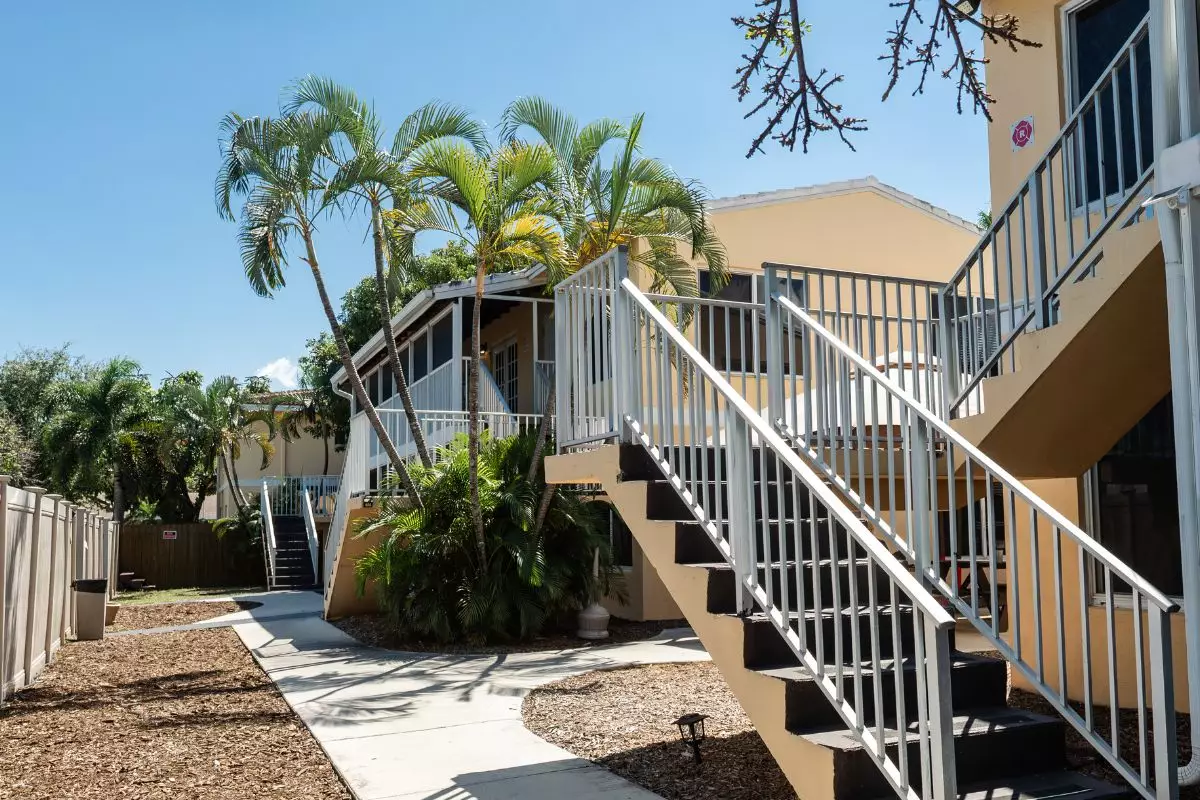Depression is a mental health condition that affects how a person feels, thinks, and functions in daily life. It goes beyond sadness, often causing persistent feelings of hopelessness, fatigue, and disconnection from others. Left untreated, it can interfere with work, relationships, and physical health, but it is a highly treatable condition.
When depression reaches a point where daily life feels impossible—when you’re unable to function, connect with others, or even get out of bed—inpatient treatment can offer the structure and support needed to begin healing. For many people in Florida, this is not just a treatment choice—it’s a lifeline.
This guide breaks down what inpatient care for depression looks like, where to find it in Florida, and how to move forward with confidence—even through uncertainty.
What Inpatient Treatment for Depression Really Means
Depression isn’t just feeling sad. It’s a clinical condition that can drain motivation, warp thinking, and make even basic routines feel insurmountable. Symptoms of depression can include:[1]
- Persistent low mood or hopelessness
- Loss of interest in previously enjoyable activities
- Fatigue or sleep issues (too much or too little)
- Appetite changes
- Difficulty concentrating
- Thoughts of self-harm or suicide
When these symptoms are severe—when someone is unable to work, connect with friends or family, or care for themselves—inpatient treatment is often the best path forward. Dealing with depression can be hard, but professional help makes recovery possible.
Inpatient (or residential) care offers full-time support in a structured, secure setting. Patients are monitored by clinical staff, provided with therapy and medication management, and removed from daily stressors that may be worsening their condition.
Why Inpatient Care Matters
According to the CDC, 1 in 5 U.S. adults will experience depression during their lifetime.[2] In Florida alone, over 400 hospitalizations per 100,000 residents are due to mood or depressive disorders annually. That number has steadily increased in recent years.[3]
Outpatient therapy is useful for many, but some people reach a point where they need more than an hour a week. Inpatient care provides an environment where real recovery can begin—especially if someone is in crisis or has tried outpatient options without success.
Types of Inpatient Depression Treatment Facilities in Florida
Florida has a range of inpatient treatment options, from hospitals to private residential programs. Here’s a breakdown:
1. Psychiatric Hospitals and Units
These are hospital-based facilities equipped to handle severe psychiatric symptoms. They’re ideal when someone is at risk of harming themselves or others, or is unable to function independently.
These centers typically offer short-term stabilization, followed by transition to outpatient care.
2. Residential Mental Health Treatment Centers
These programs provide a more home-like setting than hospitals, with 24/7 supervision and a strong therapeutic focus. Patients usually stay longer—anywhere from 30 to 90 days or more.
They’re ideal for people dealing with long-term depression, co-occurring disorders, or who need a break from their environment to focus fully on recovery.
3. State-Supported Mental Health Facilities
Florida’s Department of Children and Families oversees a network of publicly funded mental health treatment centers. These are often used when someone is unable to afford private care or has been involuntarily admitted due to safety concerns.
Admission is typically through court systems or referrals, and there may be a waiting period due to demand.
How to Begin the Process
Finding the right facility starts with a few key steps:
Step 1: Verify the Facility
Make sure the center is licensed by Florida’s Agency for Health Care Administration (AHCA). Accreditation from The Joint Commission or CARF is also a good sign.
Step 2: Insurance Verification
Call ahead to verify if your insurance is accepted. Many centers have staff who can walk you through pre-authorization, coverage levels, and any waiting list you might encounter.
Step 3: Assess Immediate Needs
If you’re in crisis (suicidal, unable to eat or sleep, or experiencing hallucinations), don’t wait—go to the nearest ER or behavioral health hospital. They can assess and refer you to appropriate inpatient care.
Step 4: Get a Referral (if needed)
Some residential centers require a referral from a therapist, psychiatrist, or physician. Others may complete their own intake screening before proceeding.
Step 5: Prepare for Admission
You’ll likely undergo a medical and psychiatric evaluation. Bring:
- A list of medications
- Insurance info
- ID
- Emergency contact
- Notes on your symptoms and their effects on your daily life
What to Expect During Inpatient Depression Treatment
Here’s what to expect during residential treatment for depression:
Initial Review & Assessment
You’ll meet with a psychiatrist and clinical team who will review your symptoms, medical history, and treatment needs.
Stabilization
You may start or adjust medications and begin daily check-ins with staff. The goal here is to reduce crisis-level symptoms.
Structured Therapy
Includes:
- One-on-one therapy
- Group sessions
- Skills-based groups (CBT, DBT, mindfulness)
- Medication management
- Family therapy, if appropriate
Aftercare Planning
Discharge isn’t the end—it’s a transition. You’ll leave with a recovery plan, outpatient referrals, and community support recommendations.
Common Challenges (and How to Overcome Them)
While receiving inpatient treatment for depression is incredibly important, sometimes it comes with challenges. The most common challenges and how to overcome them include:
- Verification delays: Insurance approval can take time. Call ahead and keep documents ready.
- Limited availability: Many facilities operate at full capacity. If a bed isn’t available, ask for referrals or be put on a cancellation list.
- Financial barriers: If you’re unable to pay out-of-pocket, look into state-supported or sliding-scale programs.
- Stigma: Remember—seeking help is a sign of strength, not weakness. Depression is a medical condition, not a personal failure.
- Family resistance: Educate loved ones. Depression affects not just your mood, but your ability to function, connect, and thrive.
When Should You Take Action?
If you’re experiencing:
- Persistent suicidal thoughts
- Severe withdrawal from family or friends
- Total lack of function at work or home
- Thoughts of harming yourself or others
…inpatient care may be the most effective next step. You don’t have to wait for a total break to act. Getting help earlier increases your chance of lasting recovery.
Get Connected to Inpatient Treatment for Depression
Depression can isolate you, but help is closer than it feels. Whether you’re the one suffering or you’re trying to support a loved one, remember: healing starts with action. Verify your options. Make the call. Ask the questions.
The path forward isn’t easy—but it’s real, and it’s possible. Thousands of people in Florida have been treated, recovered, and reclaimed their lives. You can, too.
Contact 1st Step Behavioral Health today for more information on how our inpatient treatment center can help you overcome depression.
Frequently Asked Questions (FAQ)
1. Can I check myself into an inpatient treatment center, or do I need a referral?
In many cases, adults can self-admit to an inpatient facility, especially during a mental health crisis. However, some residential programs may require a referral from a physician or therapist as part of their intake process. It’s best to call the facility directly to clarify their specific requirements.
2. What’s the difference between inpatient treatment and a partial hospitalization program (PHP)?
Inpatient treatment involves 24/7 supervision and support in a live-in setting. A Partial Hospitalization Program (PHP) is a step down—it offers intensive care during the day but allows the patient to return home at night. PHPs are often used as part of the transition plan after inpatient treatment.
3. Will I lose my job if I go to inpatient treatment?
Under the Family and Medical Leave Act (FMLA), eligible employees can take up to 12 weeks of unpaid leave for serious health conditions, including mental health treatment, without losing their jobs. You may need documentation from your treatment provider to qualify. Speak with your HR department confidentially before admission if possible.
4. How can I support a loved one who refuses inpatient care?
Start by listening without judgment and expressing concern about their safety and ability to function. If the situation is urgent and the person poses a risk to themselves or others, you can contact a local Mobile Crisis Unit or initiate an involuntary evaluation under Florida’s Baker Act. In non-crisis situations, offer to help research options, verify insurance, or attend a consultation together.
5. What happens if I don’t have insurance?
Some state-funded facilities and nonprofit organizations offer free or reduced-cost inpatient care. You can also apply for Medicaid if you meet eligibility requirements. Additionally, some private facilities offer sliding scale rates, scholarships, or payment plans—so it’s worth asking during the initial verification call.
6. Are visitors allowed during inpatient treatment?
Most inpatient programs allow visitors, but policies vary by facility. Visitation may be limited during the first few days of treatment to allow for stabilization, and some programs may require visitors to attend family therapy or orientation sessions. Always check the facility’s visitation rules in advance.
References:
- APA PsycNet: Major Depressive Disorder
- The Centers for Disease Control and Prevention (CDC): National, State-Level, and County-Level Prevalence Estimates of Adults Aged ≥18 Years Self-Reporting a Lifetime Diagnosis of Depression — United States, 2020
- FL Health Charts: Hospitalizations From Mood and Depressive Disorders
Jump to a Section
Call (855) 425-4846
